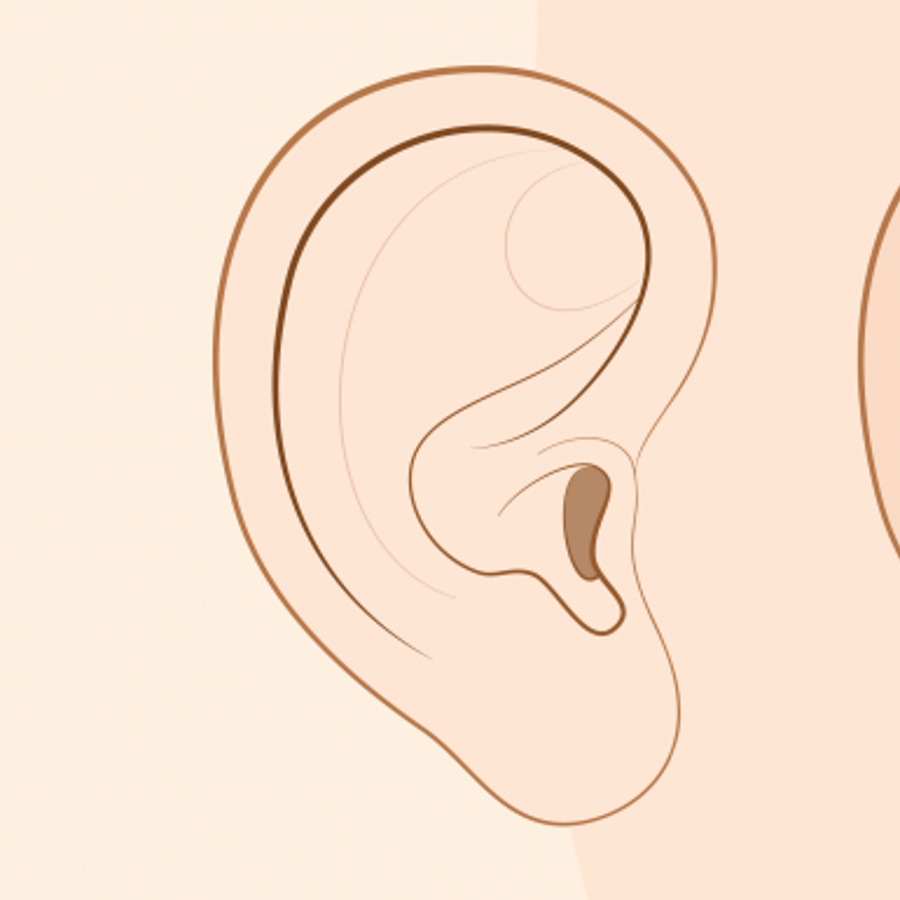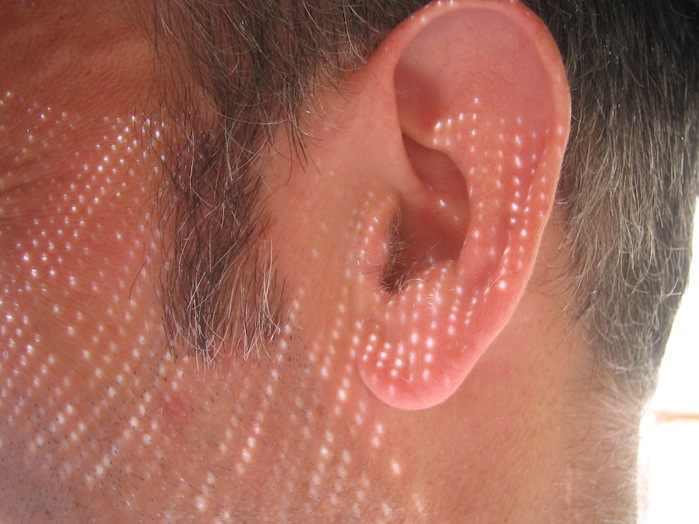
How are hanging or attached earlobes inherited?
December 1, 2017

- Related Topics:
- Genetic myths,
- Complex traits
An elementary school student from California asks:
"I have hanging earlobes. Everyone in my family has attached earlobes. Why do mine hang?"
I can see why you’re asking.
We are taught in school that parents with attached earlobes can’t have a child with unattached or hanging ones. We are taught wrong.
Parents with attached earlobes can have kids with unattached ones. And vice versa.
Cases like yours can happen because whether or not your earlobes are attached is not a simple genetic trait. There is no simple pattern we can see from people in a family. And there is no single gene.
In fact, a new study suggests that there are at least 21 and probably many more genes that are involved in whether your ear lobes will hang free or not. And you thought a Punnett square with one gene was hard!
So the bottom line is that the genetics are way too complicated for there to be simple rules like we are taught in school. Having unattached earlobes even though you have parents with attached ones is perfectly reasonable.
Finding 21 “Genes”
The first step in finding the parts of human DNA that are important for this trait was to divide people up into two (or three) groups. One group has attached earlobes and the second has unattached. (There was a third group that included people with partially attached earlobes.)
This sounds easy but it isn’t. There aren’t just two kinds of ear lobes. Turns out that there is really a range that starts at attached and ends at unattached.
Most of the people, 64,950 customers from the genetic testing company 23andMe, simply reported to researchers whether or not their ear lobes were attached. Only around 9,710 of the people actually had researchers assign them to a group. They were split into attached, unattached and partially attached groups.
The next step is looking at these people’s DNA.
Let’s say you look at all of these people’s DNA and you find a certain DNA that is common in people with attached earlobes and uncommon in people with unattached earlobes. That piece of DNA probably contributes to ear lobes being attached.
If ear lobe attachment were really as simple as we are taught in school they would have found just one bit of DNA that determined your ear lobe status. But that is not what they found.
Instead they found 21 bits of DNA that they could confidently put in one group or the other. And another 28 that might be involved too.

And if they looked at more people they might uncover other ones that didn’t happen to shake out in this particular study.
This is way too many to make simple predictions about how likely a child is to have attached or unattached earlobes. Who would have thought that such a silly trait would be so complicated!
Not the Bit of DNA You are Looking For
A really important point to make is that this study did not find the bits of DNA that actually affect your ear lobes. Instead they found the area of your DNA where the important bit might be hiding.
It is like in those spy movies where the CIA can narrow down where a phone call is coming from to a single city block. They know the bad guy is somewhere in that block but they don’t know on which floor of which building.
The same thing is true in this study. Instead of looking at the billions of possible places the important DNA bit might be, they looked at a million or so places.
This let them narrow down where the important bit of DNA might be. And using a bit of logic, they have tried to narrow it down even further.

It is like the spies ruling out that empty lot in the city block as a place where the bad guy might be hiding. He could be hiding under a bush but odds are he is in one of the buildings instead.
The researchers do something similar. Instead of buildings and empty lots, they look for genes or parts of the DNA that seem to affect nearby genes.
Each of your genes has the instructions for building or running one small part of you. So what they want to find are the genes that are involved in ear development or even development in general. They found a few that they are planning to study further.
The next part of the work will be narrowing things down even more until they find the key parts of the DNA involved in earlobe attachment. Finding the genes involved may help us better understand ear lobe attachment. And maybe predict a child’s ear lobes from DNA instead of parents’ ears.

Author: Dr. D. Barry Starr
Barry served as The Tech Geneticist from 2002-2018. He founded Ask-a-Geneticist, answered thousands of questions submitted by people from all around the world, and oversaw and edited all articles published during his tenure. AAG is part of the Stanford at The Tech program, which brings Stanford scientists to The Tech to answer questions for this site, as well as to run science activities with visitors at The Tech Interactive in downtown San Jose.
 Skip Navigation
Skip Navigation
